Amitabh Bachchan: Legend and Legacy
He turns 80 on October 11. A journey through his legend and legacy
/wp-content/uploads/2022/10/HappyBirthday1.jpg)
Amitabh Bachchan (Photo: Alamy)
EVERY LEGEND BEGINS WITH THE SAME phrase: Once upon a time…
So, once upon a time there was a comedian named Mehmood, son of Mumtaz Ali, an actor-dancer who spent a frugal career within the marginal category just above extras in the fluid caste hierarchy of Bollywood cinema. Mehmood, born in 1932, knew everything there was to find out about deprivation. He had to work as child: a brief cameo in the 1943 film Kismet, or selling chicken and eggs on the street, before graduating to a salary as driver of a well-known film director, PL Santoshi. Mehmood’s most creative odd job was teaching Meena Kumari table tennis; it did lead to his first marriage, with Meena Kumari’s sister Madhu. Guru Dutt gave Mehmood a mini-break, in CID, for which he was deeply grateful, as a stopgap villain. Comedy came in 1961, with Sasural. The next two decades could only have been predicted by an imaginative astrologer: 300 films, awards aplenty, imported limousines and racehorses. This is what you begin life selling eggs for; you wait for destiny to hatch a few Impalas and Jaguars.
Mehmood learnt one lesson from the irreverent school of existence: help others. Help was the only thing he gave quietly.
It is therefore not very well known that Mehmood opened his home to a young man struggling to find a niche in a slippery world. That young man was Amitabh Bachchan.
Amitabh’s first film, Saat Hindustani, was made by KA Abbas, a soft-left ideologue who survived on sincerity and a famous column in Blitz weekly. The 1969 film flopped, as did a few other unmentionables. You don’t really want to know about Pyar ki Kahani or Sanjog, which even generally complimentary trade reviewers dismissed as trite. Like other newcomers, Amitabh took what he got, anxious for a hit in the clutch of misses. Mehmood got him a part in something called Garam Masala, which turned out to be pretty lukewarm. Despite the occasional spark, flops began to accumulate like paragraphs in the obituary notice of a debutant.
The big exception was Anand. Director Hrishikesh Mukherjee had become godfather of small-budget talents on a low salary, and Amitabh became Dr Bhaskar Banerjee in Anand, released in March 1971. The star was Rajesh Khanna, who famously called the brooding doctor “Babu Moshai”. The distance between Khanna and Bachchan could be measured in the posters. Rajesh Khanna towered, while Amitabh was tucked away at the bottom of the opposite corner. Even Sumita Sanyal the heroine was three times Amitabh’s size in the advertising. With 17 straight hits between 1969 and 1971, Rajesh Khanna had sucked out all the stardust in the air.
Hrishikesh Mukherjee had a second movie that year, Guddi, released in September. With an excellent storyline and a startling new face as a youthful heroine, Guddi became a surprise, instant superhit. Jaya Bhaduri, another great actor, shot up high into the neon lights. She has not left them.
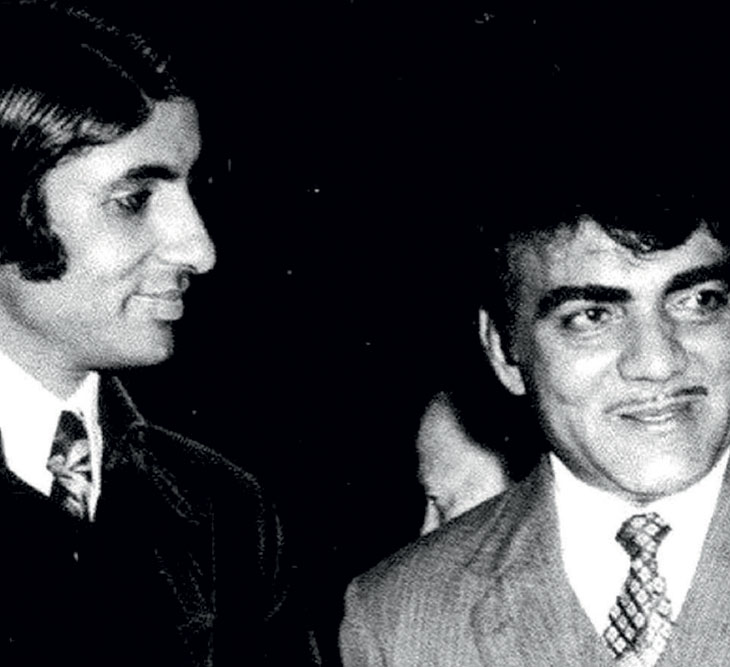
Amitabh still had a hurdle or two to encounter. His qualities were undeniable, but could he ring the cash register? Anand brought an unexpected dilemma. Moody broody Amitabh was now in some danger of being typecast by a mercilessly unimaginative industry, and confined to the purgatory of second fiddle, with or without a few layers of gloom. Producers were and are more loyal to cash than statuettes. Anand was ensconced in the ultimate middle-class comfort zone; it made some money but did not have the punters rolling in the aisles. Bachchan needed a lead role with bells and whistles.
‘The fastest horse is Amitabh. The day he picks up speed he will leave everyone behind,’ Mehmood said
Along came Bombay to Goa. Mehmood was undeniably looking for an actor who didn’t poke holes in his budget, but Bombay in the 1960s and 1970s was teeming with good-looking hopefuls waiting desperately for a chance to befriend the cameras, seeking opportunity now and money later. This was the throng which produced a generation that dominated cinema over the next three decades and more. But Mehmood recognised something very different in his young protégé. He saw the potential of a magnum superstar.
When the famous radio personality Ameen Sayani, asked him in an interview about his racehorses, Mehmood replied: “The fastest horse is Amitabh. The day he picks up speed he will leave everyone behind….”
That was prescient. It was incidental that the speedometer began to hurtle with a Mehmood movie. Bombay to Goa transformed Amitabh’s profile, because he matched Mehmood in a commercial comedy. The film earned `1 crore at the box office. Multiply that 40 times to get an equivalent to today’s money and remember that costs were low in an industry without accountants. Conventional wisdom treated brooders of the Anand mould as no more than a one-hit wonder. Bombay wanted song and dance as well. Dilip Kumar had made misfortune his forte but could also offer comic hits like Kohinoor, Azaad and the swashbuckler Aan, evidence of range across genres. Dev Anand smiled and sang when in love and laughed when poor, all the way to a gambling den in ragged trousers. Raj Kapoor had a natural flair for fun and brilliant timing. Winners.
A spurred Amitabh Bachchan picked up so much speed that even Rajesh Khanna ended up among the also-rans. With Zanjeer in May 1973 his alter ego became Vijay, for victory in any and all circumstances. Namak Haram began to break convention. Deewaar turned him into the Angry Young Man, which reflected the mood of the 1970s, teeming with the unemployed and undernourished who had much to be angry about. Amitabh became their vicarious hero, settling scores and destroying villains in high places at breathtaking pace. Sholay, where he shared the honours with Dharmendra, is too familiar, so we shall leave it after just this mention.
Amitabh’s prized hairdo did not change, but his characters did. He was both singular and various: soulful and perhaps autobiographical in Abhimaan, with the impeccable Jaya by his side; romantic in Kabhi Kabhie; unbelievably uproarious in Amar Akbar Anthony, the very antithesis of angry. There has been nothing in Bollywood remotely comparable to Father Anthony Gonsalves and his verbal pyrotechnics, and I daresay there never will be. Amitabh was a master at the height of unique genius. The only comparison one can think of is Mehmood in Padosan, as the Tamil Masterji musician who kept you laughing through a full movie without once laughing himself.
The sun is also a star, but it blazes with warmth rather than twinkle in the cold because it is closer to earth. The cinema universe is full of twinkles. Only one sun rises in every epoch and defines it
NOW THAT WE have returned to Mehmood, cut away to a question. Since there is no shortage of stupidity in the ecosphere of venomous chatter on social media, there has been many a querulous comment about whether Amitabh has ever acknowledged his debt to Mehmood. Well: shut up and listen to a fun song from the 1982 film Desh Premee: “Khatoon ki khidmat mein salaam apun ka… Aji potti patana hai, faqat kaam apun ka… Ghar baar hua ishq mein neelam apun ka…”
By 1982, Amitabh’s wish was his command. Few directors had the courage to overrule him. He defined his persona on his terms. In the ‘Khatoon’ song, Amitabh put on the moustache and lungi that Mehmood had used for his hit number in Gumnaam, the whodunit released in 1965: “Ham kaaley hain to kya hua, dilwaaley hain… Ham terey terey terey chahney waaley hain…” It was a magnificent public tribute. Amitabh Bachchan has never reprised any other actor, ever.
As if acting was not enough, his voice became a parallel phenomenon. Mrinal Sen recognised this in 1969’s Bhuvan Shome. Satyajit Ray used the voice in 1977’s Shatranj ke Khiladi. What surprised his fans, for whom he was divine, was his ability to hold a note. Amitabh couldn’t dance, but he could sing. Singing, fortunately, is not affected by long and sometimes awkward limbs.
No matter how high he rose in the ascendant, Amitabh never lost touch with the street life, manners and nuances of his country. There is no classroom which can actually teach you the difference between Holi and Hori, as in ‘Hori khele Raghuveera’. You have to know the difference from the language of the street and the chord of the heart. It is the only number from Baghban, on screen in 2003, that anyone can recall, maybe because Amitabh sang it or maybe because it is now part of the Holi repertoire.
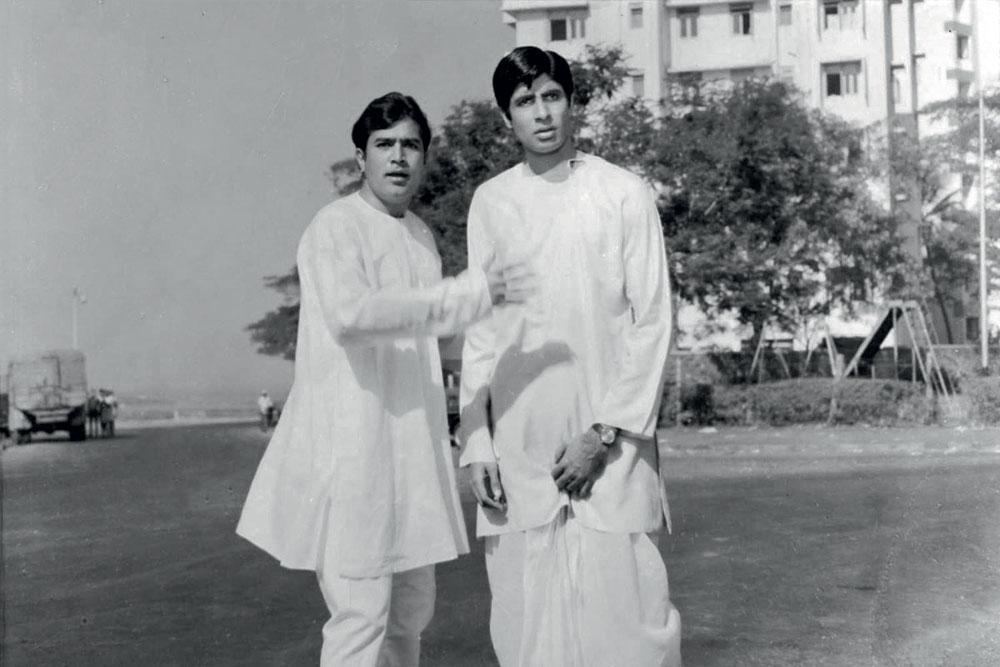
In 1978, he was the Benarasi in Don, once again spicing the revelry of Holi with the music of India: ‘Arey bhang ka rang jama ho chakachak phir lo paan chabaye…/ Arey aisa jhatka lagey jiya pey, punar janam hoii jaaye./ Khai ke paan Banaraswala, khul jaye band aqal ka tala…/ Chora Ganga kinarey wala…’
Hear the first line carefully. There is a gurgle at its end which can only come from Benaras, through the panache and mouth-stained abandon of a chora from the narrow lanes beside the Ganga, a child of the aura and ambience of the eternal city. His cultural inheritance was more from the high poetry of his father Harivansh Rai Bachchan, and his school might be Sherwood, but he was totally at home among the hole-in-a-corner shops selling thandai and paan.
Amitabh was a natural acrobat on the trapeze that linked many worlds. You could listen to him glide mellifluously to the other end of the trapeze, reciting ‘Madhushala’, his father’s epic poem which will always live at the summit of Hindi literature.
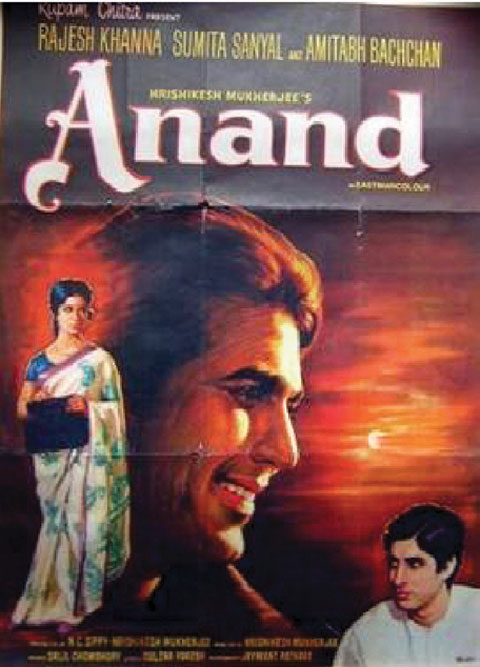
Pause: Baghban was two decades ago. Was Amitabh nearly 60 when he cavorted with such élan? Well, there was a bit of white in his cropped beard if that is any consolation. But his voice was 20.
As a teenager Amitabh was starstruck by Dilip Kumar. He was an admirer, but never an acolyte. Unlike some contemporaries, he never tried to imitate any idol. What he did want was to match his thespian skills with Dilip Kumar. Opinions naturally might differ, but here is mine for what it’s worth: Ramesh Sippy’s most famous film was Sholay but his best film was Shakti. Salim-Javed rose far above the usual tropes to produce a taut, beautifully knit and immensely powerful story. A police officer, Dilip Kumar, places duty above love for his son, Amitabh, in a dramatic confrontation between a father’s commitment to the law and a son who believes he has been betrayed and mercilessly abandoned. The dialogue and screenplay are muted, elevating the emotional quotient.
The distance between Khanna and Bachchan could be measured in the posters. Rajesh Khanna towered, while Amitabh was tucked away at the bottom of the opposite corner. He needed a lead role with bells and whistles
Sippy was certain about Dilip Kumar as the father but was inclined towards Raj Babbar as the son. Amitabh wanted the role. Sippy explained that Amitabh had become larger than life, as indeed he had. Babbar might not have been smaller than life, but perhaps he was appropriately life-size. But Amitabh would not be denied, and produced a classic characterisation that is a textbook for any school of cinema. Dilip Kumar, trapped and tortured, was equally superb. Perhaps the two enhanced each other’s acting. It does not embarrass me a jot to mention that I was on the edge of tears when the film ended.
Second on my list of greats is a 2004 film from what might be called the late Amitabh period, Govind Nihalani’s Dev. I came across the movie accidentally, while surfing for something watchable on a quiet evening. The remote in my hand paused on seeing Amitabh’s name and did not move till the film ended, leaving me drained. This was Amitabh Bachchan the legend.
By 1982 Amitabh had become a dominant lodestar of popular culture, and was taking Bollywood beyond the boundaries of Indian languages. There was only one group of Indians who remained supremely indifferent to the Bachchan revolution: the thin English-speaking elite. Most, though not all, of the snoot-spooked English newspaper editors were indifferent; indeed, they probably did not even realise that his English was as good as theirs.
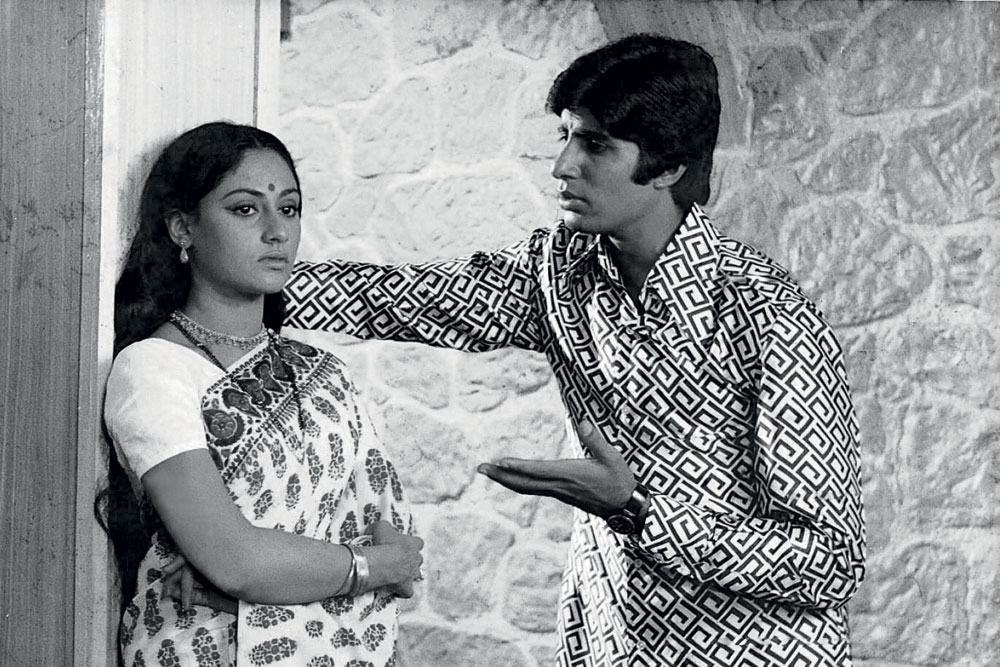
In Calcutta, we were just getting our new newspaper The Telegraph going, when in 1982 Amitabh had a near-fatal accident while shooting for Coolie (1983). We made his accident and hospitalisation page-one news and let it remain there as long as the frenzy about his health lasted, which was a while. The leading English paper of Bengal at the time, The Statesman, refused to acknowledge that Amitabh Bachchan’s life was a story. The irony was that Amitabh’s father-in-law, Taroon Bhaduri, a wonderful person and brilliant journalist, was a doyen among the Statesman’s correspondents. But of course, such high and mighty decisions were taken by the paper’s editors from their eyrie on the third floor, not special correspondents.
With an excellent storyline and a startling new face as a youthful heroine, Guddi became a surprise, instant superhit. Jaya Bhaduri shot up high into the neon lights. She has not left them. Amitabh still had a hurdle or two to encounter
For the millions of admirers, that accident was astrological, as was the string of sudden flops that followed. There is no point pretending that a film like Jaadugar honours the Bachchan oeuvre. The sun-star was in some wrong house. As a line in one of his films put it: “Bura waqt hi to hai, guzar jaayega (It is merely a bad time, it will pass)”.
It passed, but it punished.
Success beyond one’s dreams is manageable for dreams are only ambition re-imagined. It is success beyond comprehension which tends to go out of control. The worst mistake the great man made was to believe in snake-oil salesmen who told him that his brand value was greater than his acting genius. He hired corporate honchos for the Amitabh Bachchan Corporation, started in 1996, whose salaries ate up a good part of the capital and whose mistakes swallowed the rest. They left the superstar broke. But the destiny that had brought him so far refused to abandon him. Along came Kaun Banega Crorepati in 2000 and the phenomenon was raging again, this time reinventing television.
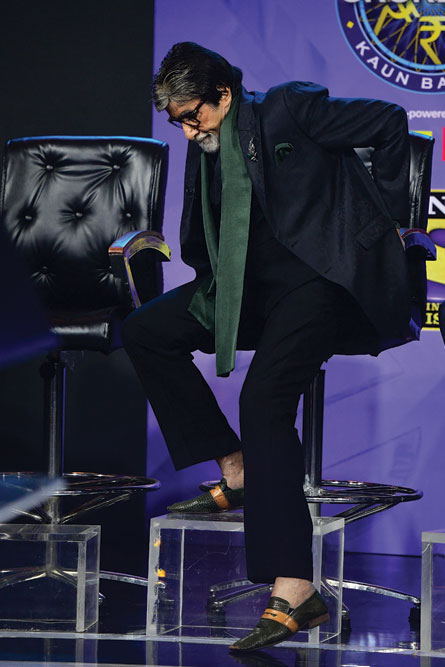
I suppose we all transform, hopefully without too much creaking, from Angry Young Man to Grumpy Old Man. Age can make you careless. Age is also psychological. If you feel that time has begun to run out, then there remains little left to run on. Bachchan, one is confident, has much more to give.
Snake-oil salesmen who told him that his brand value was greater than his acting genius left him broke. But the destiny that had brought him so far refused to abandon him. Along came Kaun Banega Crorepati in 2000 and the phenomenon was raging again
The sun is also a star, but it blazes with warmth rather than twinkle in the cold because it is closer to Earth. The cinema universe is full of twinkles. Only one sun rises in every epoch and defines it.
The French film maestro François Truffaut, I read somewhere, described Amitabh Srivastava Bachchan as a “one-man industry”. Sorry, François, you didn’t know the half of it.
Also Read
A Star for Everyone Anytime ~ by Kaveree Bamzai
The Cult of the Angry Young Man ~ by Ranjani Mazumdar
Role Moral ~ by Rachel Dwyer
Love, Loss and Longing ~ by Kaveree Bamzai
My Amitabh Moments ~ by Kaveree Bamzai

/wp-content/uploads/2025/05/Cover-War-Shock-1.jpg)







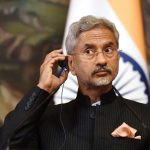






More Columns
India holds the upper hand as hostilities with Pakistan announced Open
Ajay Kumar Garg Engineering College (AKGEC), Ghaziabad Open Avenues
Sanskriti University Open Avenues